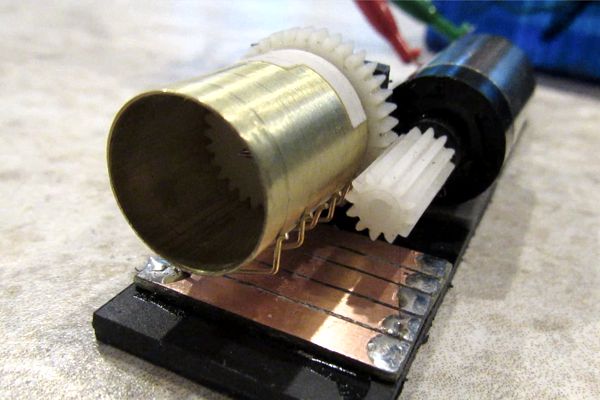Lighting Fundamentals: The Player Piano
Most modelers faced with the task of turning on lights in a sequence would simply use a solid state programmable device, like a microprocessor. But some of us prefer other methods; I've always gone with electromechanical devices. You see, solid state devices constitute black boxes, which I've never cared for. I enjoy seeing things that work—in the same way I prefer steam engines over diesels—and even more, I enjoy building them.
A common old device to create a sequence is known as the player piano, because it's based on the same principle: as a drum or disc rotates, mechanical "fingers" ride the surface in tracks, reacting to bumps, pits or contacts. A music box is the same principle in miniature.
Back in 1998 I built a player piano device to control the stoplights at an intersection. It was a five-way intersection, and the light sequence was quite complex, especially considering it included left-turn signals and pedestrian walk/don't walk signals.

The device consists of a length of PVC pipe that's slowly rotated by a low-RPM geared motor; a bank of roller microswitches ride the pipe, and raised ridges on the surface trip the microswitches.
Such devices can operate a great many different things. In this case, my little machine has been pressed into service for several different jobs. First, it ran the stoplights on the White River & Northern IV. Then it was going to run a fireworks show—a close-but-no-cigar project—for the Mountain Vista Railroad. Then it was on the White River & Northern X running the building lights: at sunset, I push a button and the lights wink on one at a time in a pseudo-random sequence. Following that, it was used to improve the firefly effect by gradually bringing on banks of fireflies. Now, it's been returned to its original job controlling stoplights for the Men at Work diorama.

I built another, much smaller and simpler player piano for the neon OPEN sign project (above). It's simply a length of brass tubing with packing tape applied in a pattern to produce the classic O-P-E-N-OPEN sequence as it rotates.
And here's yet another variation on the theme operating a chaser light sign.
|
|
Such devices are fun to build and fun to watch—much more interesting than black boxes!
